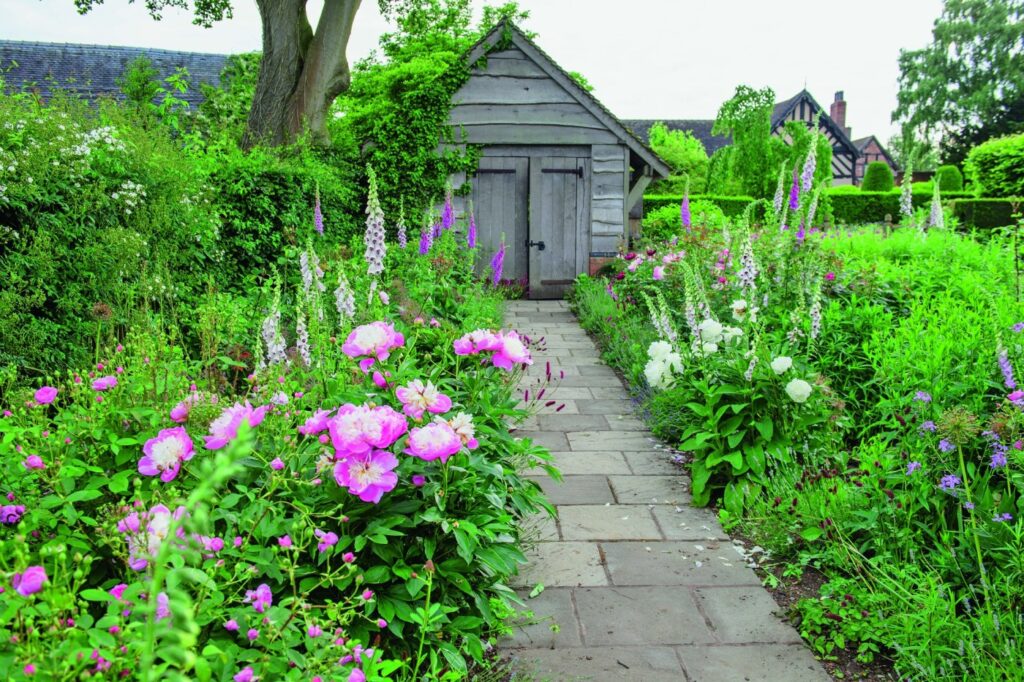
Imagine a future where plants are grown exclusively in biodegradable pots.
That future is now for Bluestone Perennials. This mail-order nursery in Ohio now ships all of its plants in 3.5” x 4’ coir (coconut fiber) containers. The sides of the pots are breathable, allowing roots to grow through them instead of being confined and circling the interior of the pot, which is never good for a plant.
Furthermore, it happens all too frequently that in the process of extracting plants from plastic pots, roots are torn and root balls split apart. Even when the plant does come out whole, the roots are matted, necessitating pulling them apart so they can grow into the earth. However, this is not a simple procedure since if break up the roots insufficiently, the plant won’t grow but if you break them up too much, the root system may be compromised.
The history of biodegradable pots is a disappointing one. The reason for this is that the thick fibrous pots that have long been the biodegradable standard do not decompose quickly enough in the earth. As a result, roots ensconced in them may often end up circling the pots’ interior, leading to a root-bound condition that halts plant growth. Visit bluestoneperennials.com to learn more about their coir pots. I also recommend perusing the vast selection of perennials growing in the company’s greenhouses, most of which will ship in the spring.
I can spend hours browsing the sites of mail-order nurseries since I learn so much from this practice and, of course, there is no requirement to buy anything. Another mail-order nursery I recommend is Logee’s (logees.com), where many rare fruit species and tropicals are available and 60 different begonia species and cultivars, most of them meant for use as indoor plants, are featured. And then, of course, there’s Annie’s Annuals (anniesannuals.com), a northern California nursery with plenty of exotic plants that grow well in our area. If any of you have a mail-order nursery to recommend, please let me know about it so I can share it with readers of this column.
“The Cottage Garden’” (Cool Springs Press, 2023), by Klaus Dalby, is a photographic treasure trove of cottage gardens he has visited over many years. The book’s back cover invites potential readers to “explore the overflowing abundance of the cottage garden,” which is a good description of what you see when paging through this volume.
“Overflowing abundance” characterizes a cottage garden since every inch of space is burgeoning with an opulence of botanical life. Flowers are tall and densely growing with plenty of roses, sweet peas, clematis, delphiniums, floxgloves, hollyhocks, borage, hydrangeas, and wildflowers galore. Although the author has a wet climate orientation, a dry climate cottage garden would also include more water-thrifty bloomers such as sages, yarrows, lavenders, and buckwheats.
The cottage garden is informal and mixed in with the flowers — fragrant roses, gardenias, and jasmines are especially prized — are rows of vegetables and the occasional fruit tree. Anything that can provide visual, aromatic or edible delight is a candidate for a cottage garden. While an English garden also tends to be informal since it is meant to mimic the look of an English countryside, there are formal elements involved such as clipped hedges that distinguish it from the freely flowing cottage garden.
“Happy Plants, Happy You” (Cold Springs Press, 2023) by Kamili Bell Hill is an impressionistic collection of thoughts about indoor plants along with helpful hints for growing and caring for them. The author deters those nuisance fungus gnats, for instance, by covering the soil with horticultural sand; the gnats crave moisture and will not lay their eggs in it. She repurposes chopsticks from takeout food to poke and aerate the soil in her pots.
Related Articles
What to prune and what to plant in the garden this week
This lawn has been named the ugliest in the world – but it’s all for a good cause
A US couple bought a 400-year-old Italian tower on a handshake. Here’s what happened
What California’s Right to Repair Law means for fixing home appliances and more
Readers share their strategies for keeping squirrels out of their gardens
Propagation in water is promoted by the author to increase your supply of just about any indoor plant. This is especially easy to achieve with philodendrons and their ilk due to the aerial roots that they produce. You simply cut a leafy shoot just below an aerial root and place it in a small volume of water that is just deep enough to cover the root and a small part of the stem. According to the author, the reason for this is that cuttings exude root hormones that would be diluted by a larger volume of water and slow the rooting process. She confesses that, ultimately, her preference for rooting in water is “mostly because I am nosey and like to watch the roots develop.”
California native of the week:
Cotton fern (Cheilanthes newberryi) is a truly special plant. Foliage is silver-gray and its habitat is steep, rocky slopes and cliffs even though it grows in both sun and part shade. It would be a suitable companion to California native Dudleyas whose chalky white leathery foliage would offer an interesting contrast to this fern’s soft-textured and gently-toothed leaves, even though the succulent Dudleya and the scruffy fern are similarly colored.
Please send questions and comments about any plant or gardening practice or problem to Joshua@perfectplants.com.
